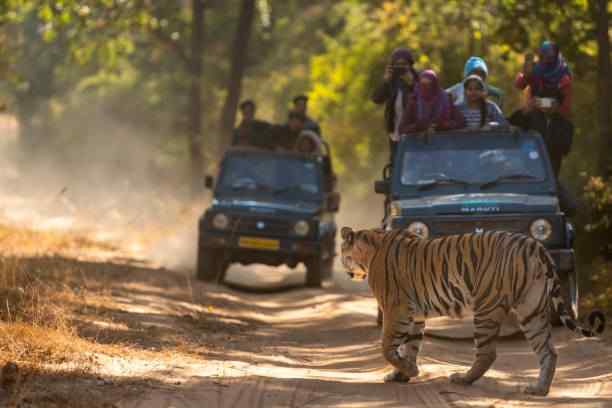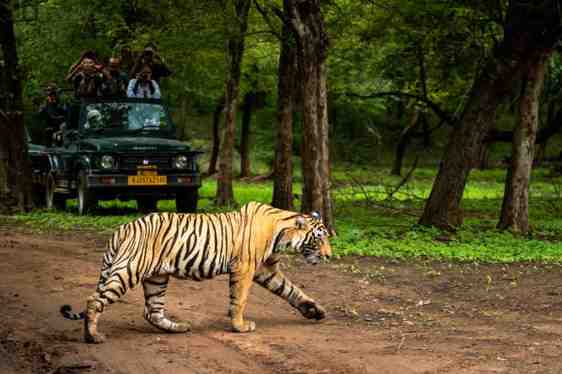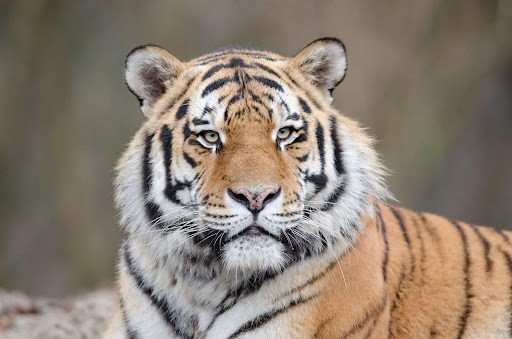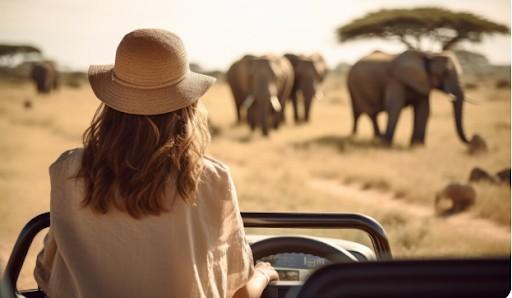
India bursts with differences and biodiversity. On the other hand, outside its big cities, vibrant festivals, and globally-known attractions, you will see an alternative face of India that flourishes in the wild. Jungle safaris are also famous in this place, offering a thrilling experience of exposure to the country in its uncivilized form of beauty. Such expeditions are not about finding animals. They allow tourists to visit some of the earth’s most rich and diverse natural environments.
The country is heaven to anyone who wants to visit national parks and wildlife sanctuaries with over a hundred national parks and numerous wildlife sanctuaries. The government is covered with various landscapes, where mangroves and thick forests, on the one hand, and snowy forests, on the other hand, coexist, as well as deserts and rainforests. These multiple terrains support the existence of various wild animals. A safari tour to India may present you with Bengal, rare snow tigers, and even endangered one-horned rhinoceros.
This primer will take you through some of the best safari destinations, what to expect, and how to go about them.
Why Pick India for Jungle Safaris?
India shines as a top spot to experience jungle safaris. The country offers several reasons to entice nature lovers. It has diverse ecosystems. The north is swept by the snow-capped mountains, which are referred to as the Himalayas. The rainforests are in the northeast, the west is filled with deserts, and the Western Ghats stretch in the south. There are diversified wildlife and landscapes at the two destinations.

Rich Biodiversity
Four out of the 36 biodiversity hotspots of the world are located in India. They are the Himalayas, Indo-Burma, Sundaland (which includes the Nicobar Islands), and the Western Ghats. They have distinct animals and plants that do not exist anywhere else.
The Big Five in Indian Wildlife
Many people are familiar with the Big Five animals in Africa, and India has its set:
- Bengal Tiger: This regal creature dominates Indian woods and is the most significant source of wildlife tourist attraction.
- Indian Leopard: The fast and silent Indian Leopard resorts to sitting on branches of trees.
- Asiatic Elephants: These are gentle and huge animals frequently viewed in the parks of the Indian South and the Northern.
- One-Horned Rhinoceros: It is one of the prides of Indian wildlife and is mainly found in Kaziranga of Assam.
- Indian Bison (Gaur): This is known as the largest wild cattle found in the whole world, and it appears in parts of central and southern India.
Cost and Ease of Travel
Indian jungle safaris are not as expensive as most Africans. Luxurious lodges or less costly guesthouses make it affordable to all purse sizes. Getting there is not difficult as domestic flights and rail services connect all the parks, including remote ones.
Top 5 Jungle Safaris in India
Some of the best jungle safaris in the world can be experienced in India, where wonderful wildlife adventures can be enjoyed amid dense forests and varied ecosystems. Below are the best 5 jungle safaris to explore:

1. Uttarakhand, Jim Corbett National Park
Jim Corbett Park is the first national park in India within the Himalayan backdrop which is also a part of the bigger Corbett Park. It was among the initial spots where project tiger was established in 1973.
Landscape: It is also marked by marshes which are interspersed with open grasslands together with hills and riverine.
Wildlife: In addition of the tiger, the park also has environment of a leopard, elephant, sloth bear, and possesses over 600 birds.
Safari Zones: The park is comprised of a lot of zones and yet the Dhikala zone offers the best in observation of human Life.
The best time to visit: November-June
Pro Tip: Stay a night at a rest house in the Dhikala forest and feel nature closely.
2. Rajasthan Ranthambore National Park
Ranthambore National Park has become one of the best locations to sight tigers today, as it was in the wild, since it used to be a royal hunting ground of Jaipur kings. It has its own historic Ranthambore fort and lakes, which are among the tourist sites in it.
Scenery: Dry forests coupled with lakes and old ruins. It is an excellent place to photograph because of the park’s rugged terrain.
Wildlife: Tigers are the most popular in these places, as is their occurrence along waters. One can also find marshy crocodiles, sambar deer, langurs, and during the exploration, and wild boars during the exploration.
Safari Zones: The park includes 10 Safari zones. The zones considered to make the park’s primary portions are 1 through 5.
Best Time to Go: October – April
Pro Tip: Going to an early morning safari will increase your chances of finding tigers.
3. Kaziranga National Park in Assam
The harboring of the one-horned rhino, a rare animal, is a popular attraction that makes the challenge of Kaziranga qualify as a UNESCO World Heritage site. It is the marshy terrain in the State of Assam on the river Brahmaputra.
Landscape: It also has high elephant grass, marsh land and dense tropical jungles.
Wild Life: it has rhinos, elephants, swamp deer wil,d water buffalo, and, about once a month, tigers and Leopards.
Birdlife: It acts as a sanctuary for migrating birds. Visiting the birds is fantastic since you can see pelicans, herons, and storks.
Best time to Visit: Visit it between November and April.
Pro Tip: Go on an early morning safari with the elephants and get closer to the rhinos.
4. Bandhavgarh National Park, Madhya Pradesh
The best thing about Bandhavgarh is that there are the highest number of Bengal tigers here than anywhere in India. It is a good habitat that wildlife photographers and lovers photograph.
Scenery: The scenery of the park forest consists of tropical forests, woodlands, and open meadows.
Wildlife: It also has so much wildlife besides tigers as one could get a site of leopards, jackals, wild boar as well as over 250 various kinds of birds.
Safari zones: Tala, Magadhi and Khitauli are the best safari zones.
Peak Visiting Time: October to June
Pro Tip: Try to arrange your visit to be 2-3 days long so that you increase your chances of encountering tigers and so that you can visit several zones of the park.
5. Periyar Wildlife Sanctuary, Kerala
Periyar in Western Ghats is special regarding nature and boat safaris in Periyar Lake.
Thick green forests, serene hills, and a serene lake are attractions of the sanctuary.
Wildlife: You can expect to see Asian elephants around the lake. There is also an opportunity to see Gaur, sambar, and Malabar giant squirrels.
Special activities available are Bamboo rafting. Guided walks through nature and night patrol tours.
The Best Time to Visit is: October to May.
Pro Tip: Thekkady is a good place to stay out during your journey. You will likely see the effects of local culture and visit the spice plantations.
What animals can I see on a jungle safari in India?
India has an excellent wildlife variety. What appears to be at the jungle safari depends on the area you visit and, at times, plain chance. There are various ecosystems in different regions of India, which gives one an opportunity to observe animals uniquely.
Big Cats
- Bengal Tigers: Bengal Tigers are fancy beasts found in the national parks of Ranthambore, Bandhavgarh, and Corbett. The Bengal tiger should be considered the superstar of Indian safaris. Tigers are solitary animals and defend their territory. They can generally be found at the waterholes in the hot, dry summer months.
- Leopards: Leopards (very sneaky critters) are hard to find, unlike tigers. They favor wooded regions such as Nagarhole and Satpura.
- Indian Leopards: Being stealthy, Leopards are more challenging to sight than tigers. Their habitat of choice is in forests such as Nagarhole and Satpura. Leopards manage to adjust to living near humans and are sometimes observed in buffer zones outside protected areas.

Magnificent Plant-Eaters
- Asiatic Elephants: These plants occur only in India’s south and northeast. They live and move about in herds and near riverine or pond sites. No place is better than Periyar and Jim Corbett Park to view Asiatic elephants.
- Nilgai (Blue Bull): Nilgai is the biggest antelope in India, inhabiting Indian/Indian plains and scrubby forests in Indian northern parts.
- Wild Boars: Wild boars prevail in most places and adjust to new environments. They often move in groups known as sounders.
Bird Wonders
It has Indigenous birds in the country and plays host to a lot of migratory birds in winter. The skies and trees are filled with colors and music.
- Hornbills: You may visit them in the Northeast and Western Ghats forests.
- Kingfishers and Bee-eaters: These stay near the banks of the rivers or rivers flowing in the woods.
- Birds of prey: Eagles, hawks, and vultures can be seen flying in Indian parks.
- Water Birds: The wetlands of areas such as Bharatpur and Ranganathittu become the home of such birds as flamingoes, pelicans, herons, and storks..
Reptiles and Amphibians
- Crocodiles: The Ranthambore and other sanctuaries have marsh crocodiles, or the so-called muggers, in their rivers and lakes. Saltwater crocodiles take over the waters of Sunderbans.
- Snakes: The tourists can see those that are venomous and nonvenomous. The interesting ones include the Indian rock pythons and cobras.
- Monitor Lizards: These are usually basking with their backs exposed out in the open on rocky outcrops or simply lounging about ponds and lakes.
Key Advice to Plan Your Wild Safari
To embark on a safari, one has to prepare
- Planning and Booking Savvy: Construal your safari reservations well in advance to have the safari permits and lodgings in peak seasons or those that may get fully booked. Permits often have tight restrictions per zone and safari time slot, whether morning or afternoon. Look into different stays, from simple forest rest houses to high-end jungle lodges. Think about how close they are to the park’s entrances.
- Follow the Rules: Park guidelines significantly keep visitors and wildlife safe and support conservation efforts. Obey the rules, like staying in the car, staying silent by only whispering, and not approaching animals with sudden movements. Do not litter, do not smoke, and never feed and tease animals. Obey your guide or naturalist; they know what they’re doing, and you must always obey them.
Dress Smart and Pack Right:
- Establishment: Wear lip colors. Wear more subtle color gowns such as olive, khaki, brown, beige or grey. One is also advised to select something non-illuminating colors e.g. red, white, yellow or blue color but not black because it allows in heat and insects. Please put on clothing made of cotton or linen, and it should be light and comfortable. Wear layers as in the morning and evenings are cold and the days get hot. During the winter, a light jacket/fleece goes a long way. A large brim hat and a scarf or bandana might be useful.
- Shoes: Sneakers or closed-toe shoes are acceptable for jeep safaris. Trekking shoes, the intelligent type, are the shoes to walk on. High SPF factor sunburn lotion, mosquito repellent with DEET, eye shades and binoculars (ESSENTIAL during bird watching and long gazing), camera with a telephoto lens of at least 300 mm (good on wildlife), extra battery/memory card, a bottle of water that can be refilled and a little backpack.
- Extras: A mammal and bird identification guide, a notebook and a pencil to write notes, and a head torch or flashlight to provide a light source during morning field trips.
- Control Expectation: Nature works on her schedule. You are privileged because you do not have the right to a tiger, leopard, or rhino sighting. Enjoy whatever sighting: the elegant chital, the majestic sambar, the agile langurs, the flying eagles. The enchantment includes the jungle’s sounds, odor, and ambiance. Silence and waiting time greatly maximize your chances.
What Is the Actual Cost of a Jungle Safari?
Jungle safaris in India cost information: the cost information of the jungle safari in India is helpful as it guides the tourists in planning their tour, especially when traveling with a family and/or a tight budget. It varies in price according to the season you wish to visit, the park you would prefer to see, and the type of safari. Many variants can be offered in India, from cheap group tours to luxurious safaris.
The Great Influences on the Price
Different factors influence the price of a jungle safari in India; these include:
- Type of Safari Vehicle:
- Jeep Safari: A jeep fits six people. It offers a more personal experience, and is more likely to see wildlife. It is the option most people prefer, although it is more expensive than group safaris.
- Canter Safari: is an open bus that accommodates about 20 clients. It is more efficient for large groups and less expensive than others.
- Elephant Safari: This can be found in places such as Kaziranga or Jim Corbett. It provides a unique scenario, but the travel time is less expensive.
- Boat Safari: is provided in parks containing lakes or rivers, such as Periyar or Sunderbans. The charges are based on the distance and whether it is a single or shared ride.
- Park Entry Costs:
- National parks decide their fees, including conservation charges and cameras.
- They often charge Indian visitors and foreigners, with foreigners paying a higher price.
- Guide and Vehicle Costs:
- You must hire a registered guide.
- Renting a private vehicle increases costs but gives you more privacy and freedom to move around.
- Type of Safari Vehicle:
- Accommodation Deals:
Various jungle lodges offer package deals, including food, safari drives, and nature walks.
5-star resorts may be priced at 15,000-30000 a night, and budget hotels or forest guest houses at 1,500-5000 a night.

The Call of the Wild is Waiting
Most forests of India are full of life and old rhythms. Think big, be sincere about what is achievable, and approach with curiosity. Whether you are on a jungle safari in India, it can be a memory that you will cherish all your lifetime. Go and research those parks, get those permits that are difficult to acquire, bring along a pair of binoculars, and be prepared to explore the wild jungles of India. The rustling of leaves, a smear of orange stripes, the voice of an elephant in the mist—your adventure is ready to happen. Mangal in the jungle! May you have a happy time in the jungle!
Frequently Asked Questions:
Q1: Which jungle safari is best in India?
Jim Corbett National Park is among the finest jungle safaris in India, likewise boasting of teeming wildlife—think tigers and elephants. Situated in Uttarakhand, it offers spectacular jeep safaris, bird watching, and stunning visual spectacles for nature enthusiasts and photographers.
Q2: How many jungle safaris are there in India?
India has more than 100 jungle safaris spread across its numerous national parks and wildlife sanctuaries. The most celebrated ones are Jim Corbett, Ranthambore, Kanha, Bandhavgarh, Kaziranga, Sundarbans, etc. Each offers distinctive wildlife experiences, including encounters with tigers, birdwatching, and elephant safaris.
Generally speaking, the cost of a jungle safari in India can vary anywhere between ₹500 and ₹7000 per person, depending on the park itself, the time of year, the type of safari (you have jeep safari, canter safari, or elephant safari), and whether you opt for a shared or a private safari.
| Safari Type | Cost (Approx. Per Person) | Notes |
|---|---|---|
| Shared Jeep Safari | ₹800 – ₹2,500 | Common in most parks |
| Private Jeep Safari | ₹3,000 – ₹7,000 | For 6 people; more exclusive |
| Canter Safari | ₹500 – ₹1,200 | Available in some parks like Ranthambore |
| Elephant Safari | ₹1,000 – ₹3,500 | Limited availability, unique experience |
Q4: Which are the top 5 wildlife sanctuaries in India?
Top 5 wildlife sanctuaries of India: 1) Periyar 2) Sundarbans 3) Bhadra 4) Chilika 5) Dibru-Saikhowa These wildlife havens provide plenty of wildlife, beautiful landscapes, and unique wildlife, making them an ideal destination for ecotourism throughout the country.
Q5. Can children go on jungle safaris?
Q6. Are jungle safaris in India safe?
Yes, it is certainly safe to go on a jungle safari with approved guides and forest department vehicles. Always follow safety instructions.


